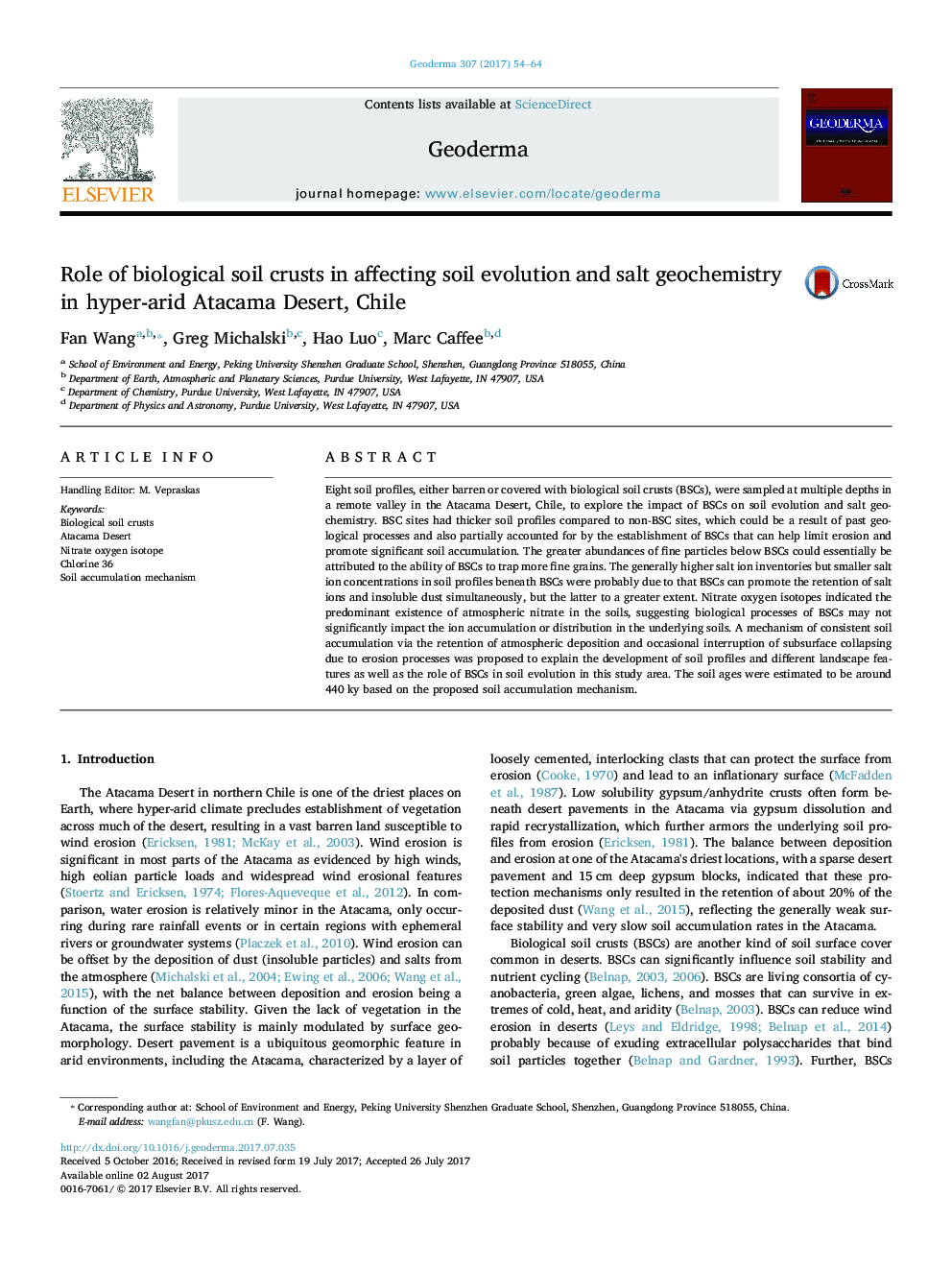| Article ID | Journal | Published Year | Pages | File Type |
|---|---|---|---|---|
| 5770229 | Geoderma | 2017 | 11 Pages |
â¢BSCs protect soil from wind erosion and facilitate consistent soil accretion.â¢BSCs enhance dust retention leading to smaller salt ion to dust ratios.â¢Nitrate is mainly from atmospheric deposition with minimal inputs from BSCs.
Eight soil profiles, either barren or covered with biological soil crusts (BSCs), were sampled at multiple depths in a remote valley in the Atacama Desert, Chile, to explore the impact of BSCs on soil evolution and salt geochemistry. BSC sites had thicker soil profiles compared to non-BSC sites, which could be a result of past geological processes and also partially accounted for by the establishment of BSCs that can help limit erosion and promote significant soil accumulation. The greater abundances of fine particles below BSCs could essentially be attributed to the ability of BSCs to trap more fine grains. The generally higher salt ion inventories but smaller salt ion concentrations in soil profiles beneath BSCs were probably due to that BSCs can promote the retention of salt ions and insoluble dust simultaneously, but the latter to a greater extent. Nitrate oxygen isotopes indicated the predominant existence of atmospheric nitrate in the soils, suggesting biological processes of BSCs may not significantly impact the ion accumulation or distribution in the underlying soils. A mechanism of consistent soil accumulation via the retention of atmospheric deposition and occasional interruption of subsurface collapsing due to erosion processes was proposed to explain the development of soil profiles and different landscape features as well as the role of BSCs in soil evolution in this study area. The soil ages were estimated to be around 440Â ky based on the proposed soil accumulation mechanism.
